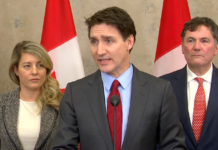The Federal Financial Consumer Agency (FCAC), one of Canada’s chief financial protection organizations, has two-thirds of Canadians having trouble paying their mortgages — with more than half of them sinking into more debt to cover the rising costs.
This should come as no surprise.
Money is no longer almost interest free. After 20 consecutive rate hikes by the Bank of Canada (BoC), the interest rate of 5% is now the highest in two decades.
Mortgage holders are praying the governor of the BoC Tiff Macklem stops the run on anxiety when he makes his next rates decision on September 6.
But few expect he will hold back because inflation has not yet hit the desired 2%.
There are presently 6.08 million homeowners with mortgages (out of a total of 10.01 million owner-occupied dwellings in Canada.)
So, rates are important to millions.
Back in 2020, just as the world pandemic was about to hit, Mortgage Professionals Canada’s (MPC) Annual State of the Residential Mortgage Market in Canada report provided a detailed look at borrower behaviour and mortgage market trends in 2020, the year things began to unravel.
The comprehensive report, compiled by MPC’s chief economist Will Dunning, looked at everything from average mortgage rates and sources of down payments to equity takeout and mortgage preferences.
“In a normal year, about 4.5% to 5% of Canadians buy a new or existing home,” Dunning said in a release, adding that percentage could rise to 5.5% to 6% this year.
“…in proportional terms, this is a very large increase, and it is overwhelming the available supply,” he continued. “It is possible, but far from certain, that this could continue for some time – that a small rise in the percentage of Canadians who buy homes could result in sustained, very strong demand.”
The then current mortgage arrears rate in Canada (as of November 2020), down slightly from 0.23%.
This equated to roughly 1-in-427 borrowers,
“…with exceptionally low interest rates and very strong housing markets across Canada, mortgage holders who have trouble with their payments will often be able to solve their problems by selling (a solution that is far from ideal, but is certainly preferable to losing a home due to a mortgage default),” Dunning noted.
Then, poof, inflation took hold. Money was no longer as cheap as borscht. Interest rates were beginning to rise.
Suddenly, it wasn’t Kansas anymore.
Then, after a two-year-long pandemic and 20 consecutive interest-rate hikes, high anxiety moved to the neighbourhood and changed the game.
In today’s world, however, the FCAC said two-thirds of mortgage holders are having trouble meeting their financial commitments.
Canadians are facing the burden of high interest rates, forcing them to either increase their monthly contribution or extend their amortization, while high inflation has pressured many with the rising cost of living.
“Today’s economic environment is characterized by high household debt, increased cost of living and higher interest rates. As a result, some mortgage holders are at risk of not keeping up with their regular payments,” the FCAC said.
In many cases, variable-rate mortgage holders with fixed payments are paying only the interest portion of their mortgage, slowing down the rate at which they will pay off their debt.
In some cases, said the FCAC, mortgage holders are entering negative amortization, meaning their fixed payment does not cover the entire interest portion, leading to accruing interest and a rise in the total amount they owe.
FCAC expects lenders to implement policies and procedures such as waiving prepayment penalties, waiving internal fees and costs, not charging interest on interest, and extending amortization.
It is that dire.





















